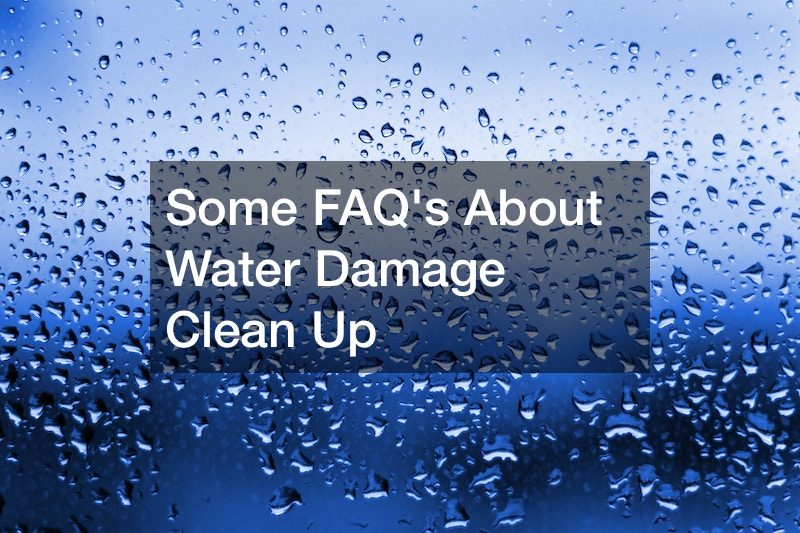
When there’s been water damage to your home, it can be extremely devastating. The average cost of water damage from water damage companies is between about $4 and $7 for each square foot. This average cost of water damage repair often includes getting rid of excess moisture and repairing the building materials that were damaged. People often need new drywall after a flood in the home.
The average cost of water mitigation is about $2,400. Depending on the cause of the flooding, your homeowners’ insurance policy may pay for the damages. It’s important to make sure that you get an estimate for the work before it gets done. With the average cost of water remediation, it can be expensive to make the repairs, but they need to happen. Flooding can cause mold that needs to be removed from the home.
It’s important to get the water remediation quickly after the flood so that the indoor air quality won’t continue to be affected by the damage. You may have to stay somewhere else until the water damage mitigation is done so that you aren’t breathing in mold and mildew. It’s a good idea to get the problem taken care of rapidly so you can get back to your home.

Due to increases in crazy weather patterns and a corresponding lack of solid flood insurance coverage, services that clean up water damage are more in demand than ever. Often, small and mid-size residential cleaning services or even carpet cleaning services offer water clean up and/or extraction as an additional option for those that may need it. Sometimes, water damage may occur and not be immediately apparent, depending on the cause and intensity/volume of the leak. Here are some frequently asked questions about water damage and how a good service will go about helping to clean it up.
What Causes Water Damage?
- A leaky or broken water heater
- A burst pipe
- Overflowing toilets
- Floods, heavy rain and storm-related damage
- Burst/broken sprinklers
Can Damage Remain Hidden?
Absolutely, yes. Surfaces like walls and ceilings may appear dry after a water damage incident, but quite often it’s lurking behind the surface in question, slowly seeping. A well-trained residential cleaning service will use a moisture meter to measure if there’s water behind your walls, which can begin to produce mold in as little as 36 hours. Moisture that makes its way to insulation can also be a place that harbors mold growth unbeknownst to homeowners. Odor usually comes secondarily, letting residents know there’s mold well after it has started growing. Additionally, water can hide inside electronics, between paper files, in furniture crevices – anywhere, really. Professionals can help you find all the water and work to repair the damage.
How Serious is the Mold?
It depends on how fast you catch it, but it can be hazardous when left over time. Water damage is the #1 cause of indoor mold growth, and mold requires moisture to spread. By removing the moisture, you halt the further growth, although existing mold needs to be removed as well. Mold develops with some combination of moisture, warmer indoor temperatures and something it can feed off of (dust, drywall, carpet).Anyone from a good residential cleaning service will know where to look for developing mold after a water incident.
How Does Water Removal Happen, Exactly? - First, as much water as possible needs to be extracted, whether through toweling or some sort of pump
- Furniture must either be removed from the area or, conversely, can be set on top of blocks
- Carpet should be taken up from the floor – this requires professional training to be done properly with an eye to not destroy the carpet seams
- Carpet padding must be completely removed and thrown out
- Before padding is replaced, the sub floor needs to be thoroughly measured with moisture meters and a more thorough extraction/professional suction or drying technique must be applied
What Should We Do After a Storm?
Clean up services will book up mighty fast following a natural disaster, so while you wait for an appointment, do the following: - Remove as much of the existing, visible water as you can
- Move furniture up onto wood blocks, preferably somewhere that isn’t carpeted
- Begin removing the baseboards around affected areas; drill coin-sized holes in the exposed space to encourage air movement
- Remove items of value from the area
How Does Professional Air Drying Work?
Professional cleanup crews and water damage restoration companies have access to speed dryers and air mover machines that can apply the force of air to move moisture off of a surface. Additionally, they may use dehumidifiers as a way of literally drying out the air.
Especially if you live in an area that has a storm season, have the number for a commercial cleaning service handy. Once the water is in your home, the countdown to increased damage begins and time is of the essence.
Continue reading here.
